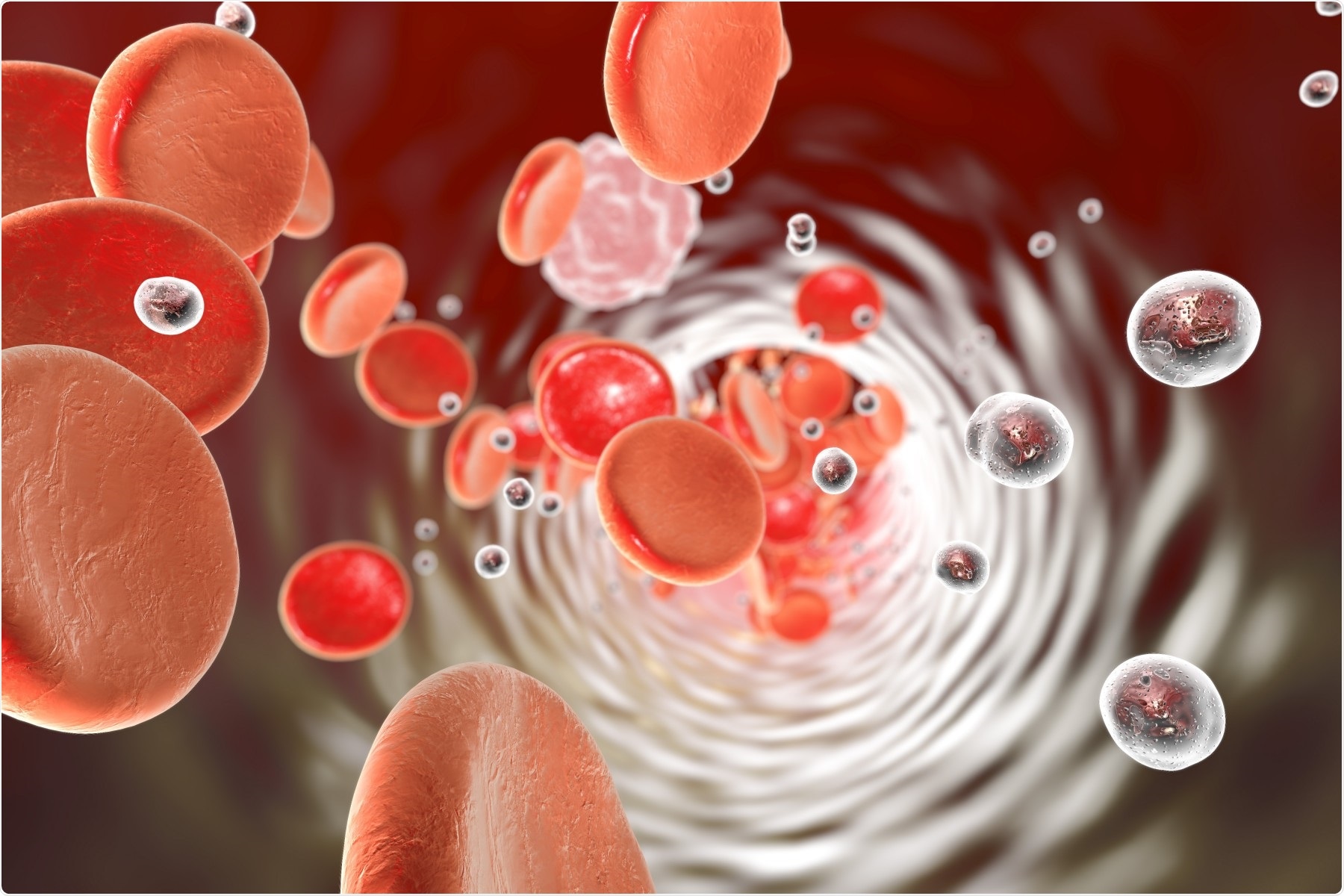According to scientists, introducing genetic material into the body to treat numerous diseases induced by genetic mutations can certainly work—but making sure that those materials are safely sent to the right location is quite complicated.

This 3D image conceptually illustrates how lipid-like nanoparticles carrying mRNA travel through the bloodstream. Image Credit: Shutterstock.com.
Investigators, who designed lipid-based nanoparticles carrying two groups of protein-making instructions, have now demonstrated in animal studies that these nanoparticles can be used for treating two genetic disorders. The study was recently published in the Science Advances journal on August 21st, 2020.
In one such experiment, the payload-containing nanoparticles encouraged the synthesis of the missing clotting protein in mice that are actually models for hemophilia. In yet another test, the cargo of the nanoparticles decreased a gene’s activation level; when this gene is overactive, it disrupts the removal of cholesterol from the bloodstream.
An applicable messenger RNA is present in each nanoparticle. RNAs are molecules that convert genetic data into functional proteins.
We demonstrated two applications for lipid-like nanomaterials that effectively deliver their cargo, appropriately biodegrade and are well-tolerated. With this work, we have lowered potential side effects and toxicity, and have broadened the therapeutic window. This gives us confidence to pursue studies in larger animal models and future clinical trials.”
Yizhou Dong, Study Senior Author and Associate Professor of Pharmaceutics and Pharmacology, Ohio State University
This latest study builds on a group of lipid-like spherical compounds that Dong and collaborators had earlier developed to send messenger RNAs. This group of particles was developed to focus on disorders that involve genes expressed in the liver.
The researchers tested numerous structural variations to those particles, effectively introducing “tails” of diverse types of molecules to them and then landed on the structure that rendered the materials the most stable.
The minute compounds have a major task to perform: setting out on a journey via the bloodstream, transporting molecules to the target site, discharging the perfect concentration of messenger RNA cargo at exactly the right time, and finally safe decomposing.
Mice experimental indicated that these particles are capable of doing just that.
The team injected nanoparticles that contain messenger RNAs retaining the instructions to generate a protein, known as human factor VIII, into the bloodstream of healthy mice and also into the mouse models for hemophilia.
A lack of the human factor VIII protein, which leads to blood clotting, results in the bleeding disorder. Within a span of 12 hours, the protein-deficient mice created sufficient human factor VIII to achieve 90% of normal activity. When the team checked the organs of both normal and protein-deficient mice, they found that the treatment did not cause any damage to organs.
It can be helpful to think of this as a protein-replacement therapy.”
Yizhou Dong, Study Senior Author and Associate Professor of Pharmaceutics and Pharmacology, Ohio State University
The team performed the second experiment in which nanomaterials were charged with two kinds of instructions—a guide RNA to ensure that the edits took place in a certain gene in the liver known as PCSK9, and a messenger RNA carrying the genetic code for a DNA base editor.
Many numbers of mutations that boost the activity of this gene are known to promote high cholesterol by decreasing the clearance of cholesterol from the bloodstream.
Based on the analysis, the treatment was found to cause the planned mutation of around 60% of the target base pairs in the PCSK9 gene, and that only a low dose was required to create high editing effect.
Dong acknowledged the contribution of industry and academic associates, who helped improve this study. The study’s co-corresponding authors include Denise Sabatino from Children’s Hospital of Philadelphia and Delai Chen from Boston-based Beam Therapeutics, who offered know-how in hemophilia and DNA base editing, respectively.
Dong and the study’s first author Xinfu Zhang are the inventors of the lipid-like nanoparticles for which Ohio State has filed patent applications. The new technology has been licensed for additional clinical development.
Source:
Journal reference:
Zhang, X., et al. (2020) Functionalized lipid-like nanoparticles for in vivo mRNA delivery and base editing. Science Advances. doi.org/10.1126/sciadv.abc2315.